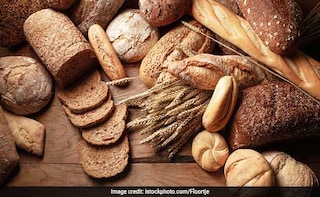Most diabetics are advised to eat low-glycaemic foods, considering they may spike blood sugar levels quickly and cause various other health problems. Therefore, it is imperative for most who are susceptible to diabetes or those who already have the condition. What is glycaemic index and what is its function? We give you a sneak peek of the foods that have high glycaemic index and are supposed to be avoided as much as possible.According to Dr. Parul Srivastava, Nutritionist and Dietician, Eldercare, "The Glycaemic index is a value assigned to foods (carbohydrate), based on how slowly or quickly they affect blood glucose levels. Carbohydrates with a low GI value (55 or less) are more slowly digested, absorbed and metabolised and cause a lower and slower rise in blood glucose. Foods with high-glycaemic index numbers make blood sugar levels as well as insulin levels spike fast and subsequent rapid return to feeling hungry." Kanika Malhotra, Senior Nutritionist, HealthCare at HOME (HCAH) agrees, "GI also depends on whether the food is eaten in isolation or with other foods. Consuming a food along with protein, fat, or other CHO that have a lower GI effectively lowers its GI value. Other factors that might affect a food's GI include the ripeness of fruits (under-ripe fruits have a lower GI than ripe ones) and also how food is cooked or processed."
Medium GI Foods: 56-59
High GI Foods: 70 or more
According to the American Diabetes Association, glycaemic index tends to give only one value per food, but variations may be possible due to the following reasons: cooking methods, processing and ripeness. Therefore, it is best to consult a doctor before switching or swapping foods, especially if you are a diabetic.
Medium GI Foods: 56-59
High GI Foods: 70 or more
How do high glycaemic foods affect blood sugar?
According to School of Public Health, Harvard University, eating high glycaemic foods tend to cause spikes in the blood sugar, which can lead to an increased risk of developing type-2 diabetes, heart disease, weight gain, et al. In some cases, it also increases the risk of breast, prostate, colorectal and pancreatic cancers.Advertisement
Here's a list of foods with high glycaemic index:
| 1. White bread | 8. cereals | 15. Potato chips | 22. Muesli |
| 2. Watermelon | 9. Pasta | 16. Popcorn | 23. Whole wheat bread |
| 3. Honey | 10. Millet | 17. Beer | 24. Juices with added sugar |
| 4. Doughnuts | 11. White flour | 18. Liqueurs | 25. Baked potato |
| 5. French fries | 12. Raisins | 19. Sugary foods | 26. Onions |
| 6. Bananas | 13. Pineapple | 20. Grapes | 27. Soda |
| 7. Rice | 14. Corn syrup | 21. cherries | 28. Puffed rice |
According to the American Diabetes Association, glycaemic index tends to give only one value per food, but variations may be possible due to the following reasons: cooking methods, processing and ripeness. Therefore, it is best to consult a doctor before switching or swapping foods, especially if you are a diabetic.
For the latest food news, health tips and recipes, like us on Facebook or follow us on Twitter and YouTube.
Advertisement
